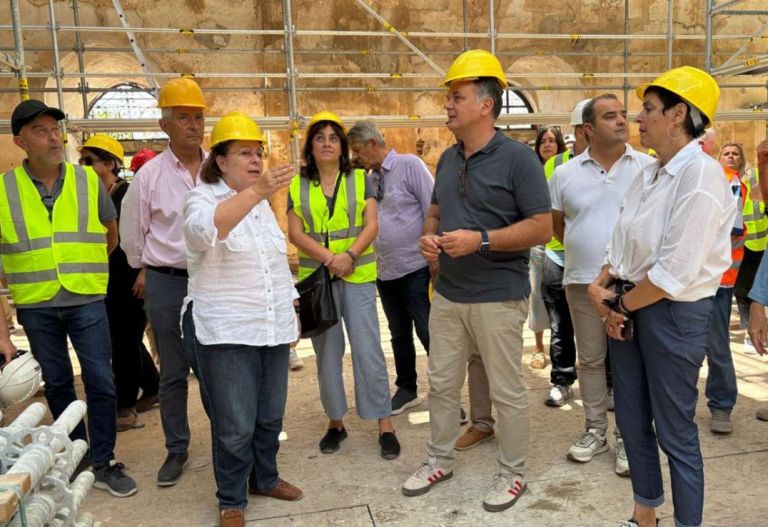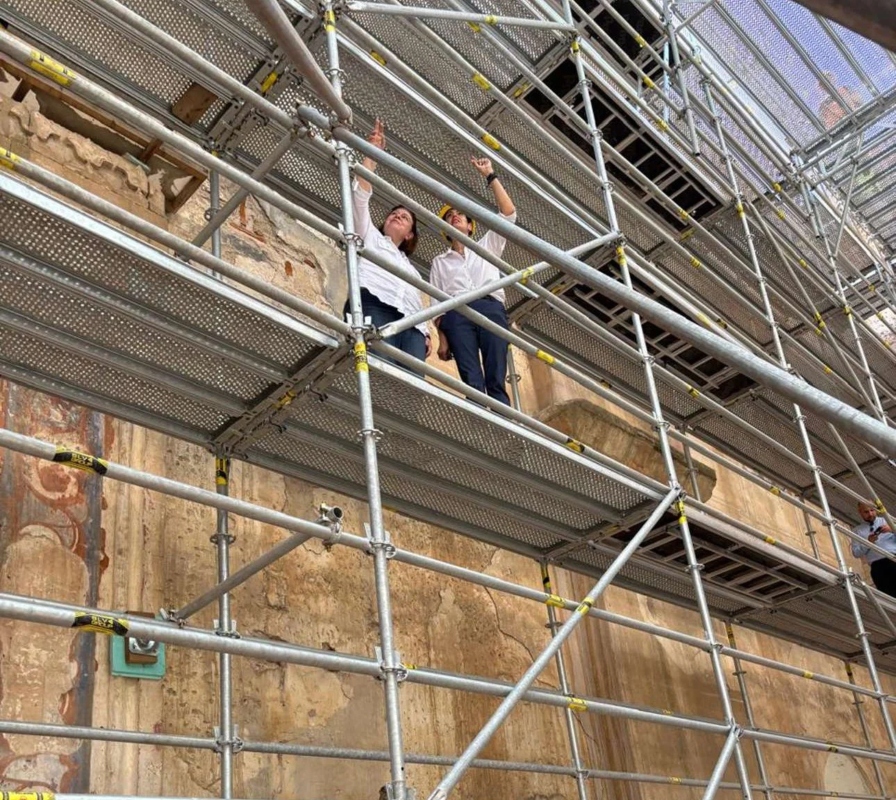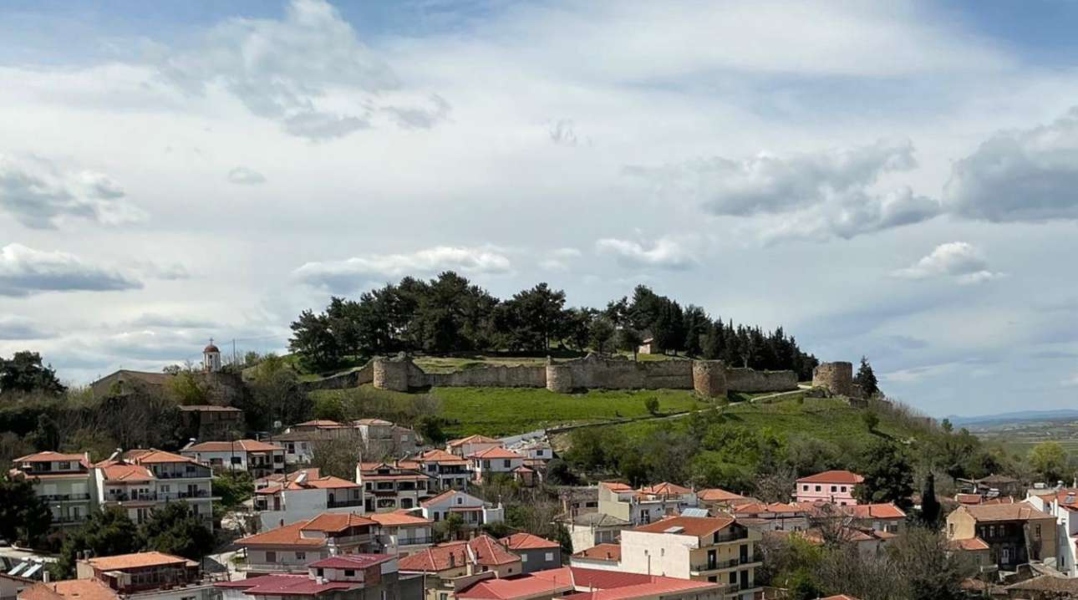Mendoni from Didymoteicho: €70 Million Invested in Cultural Projects Across Evros

Πηγή Φωτογραφίας: Ministry of Culture//Mendoni from Didymoteicho: €70 Million Invested in Cultural Projects Across Evros
During an official visit to Didymoteicho, Minister of Culture Lina Mendoni conducted an on-site inspection of the Bayezid Mosque, a prominent Ottoman-era monument currently under restoration. The project—valued at approximately €12.5 million—is being funded through the Recovery and Resilience Facility and the National Development Programme.
“Evros is at the heart of the government’s priorities under Prime Minister Kyriakos Mitsotakis,” Mendoni said, adding:
“Since July 2019, €70 million has been invested in the cultural sector of the Evros region. For us, culture is a form of defense—and no one understands that better than the people who live here on the borders.”
A Monument of Complexity and Historical Layers
The Bayezid Mosque—first inaugurated in March 1420, according to its entrance inscription—is undergoing a complex and technically demanding restoration, with a strict completion deadline set for the first quarter of 2026. The project respects the site’s historical stratigraphy, aiming to highlight its architectural evolution across centuries.
Mendoni noted that the project is advancing steadily, particularly after resolving several major technical challenges.
“Monuments often hide many surprises. In the case of the Bayezid Mosque, the difficulties were amplified by the building’s age, the fire damage, the structural materials, and the original construction techniques,” she explained.

Restoration Works: Materials and Methodology
The minister climbed scaffolding platforms reaching up to 18 meters high to inspect ongoing work on the wooden roof and minaret. The timber—green oak of large cross-sections (some beams measuring 0.35 x 0.45 meters and up to 13.5 meters in length)—is sourced from sustainably managed forests in France, Switzerland, and Germany. The wood is dimensioned and certified for strength at regional sawmills, based on the specifications of the approved restoration plan.
Significant progress has already been made:
- The majority of the roof’s base beams have been placed at the wall caps and internal piers
- The minaret is being carefully dismantled down to its masonry cap to allow for full structural restoration using salvaged fire-resistant materials, supplemented by new ones

Bayezid Mosque: A Landmark of Ottoman Architecture
Located in the heart of Didymoteicho, the Bayezid Mosque is one of the most significant Ottoman-era monuments in Greece. It spans nearly 1,000 square meters, with a square-shaped prayer hall and a minaret on its western corner. A fire in March 2017 devastated its original wooden roof, making a complete restoration essential.
Unveiling of Strategic Plan for Didymoteicho Castle
Comprehensive research program leads to phased restoration roadmap
At the Byzantine Museum of Didymoteicho, Mendoni also presented a research program developed in cooperation with the Aristotle University of Thessaloniki. The project prioritizes interventions at Didymoteicho Castle, aiming for both preservation and integration into the urban landscape.
“The Castle of Didymoteicho—also known as the ‘Twin Walls’ Castle—is the most important in Thrace,” Mendoni emphasized.
“It sits atop the Kale hill, a commanding position dotted with carved caves used historically as living quarters.”
The research has produced a holistic management strategy, encompassing everything from historical documentation to concrete structural interventions. The first phase of restoration is now ready to be tendered by the Department of Byzantine and Post-Byzantine Monuments, funded through the Regional Operational Programme of Eastern Macedonia and Thrace (NSRF 2021–2027).
Castle Restoration Highlights – Phase One
- Detailed architectural and structural mapping
- Prioritized restoration of two gates (Bridge Gate and Market Gate)
- Rehabilitation of four towers (T1, T2, T3, T4)
- Reconstruction of cobbled pathways to improve accessibility
- Stabilization of collapsed masonry in key wall segments
- Creation of viewing platforms near Tower 1 (also known as The Princess’s Tower)
Further work includes:
- Managing abandoned buildings
- Necessary expropriations
- Conservation of carved cave dwellings within the castle perimeter
A Fortress with Deep Historical Roots
Dating back to the 6th century AD, the Castle of Didymoteicho was a vital military, administrative, and commercial hub during the Byzantine Empire. Its strategic importance was recognized even in ancient times, largely due to its fortified walls, which still span roughly 1,300 meters, with 24 surviving towers.
Notable facts:
- The castle was reinforced by Emperor Justinian and later by Constantine V (751 AD) and again in 1303 AD
- In 1713–14, King Charles XII of Sweden was held under semi-house arrest in the castle
- It contains a small stone chapel and the current Armenian Church of Saint George, built on the site of the Byzantine church of Saint George Palaiokastritis, where Emperor John VI Kantakouzenos was crowned on October 26, 1341
Source: pagenews.gr
Διαβάστε όλες τις τελευταίες Ειδήσεις από την Ελλάδα και τον Κόσμο





Το σχόλιο σας